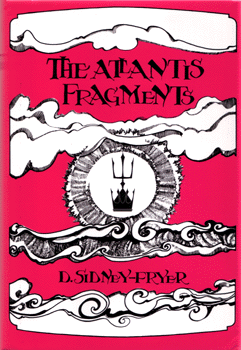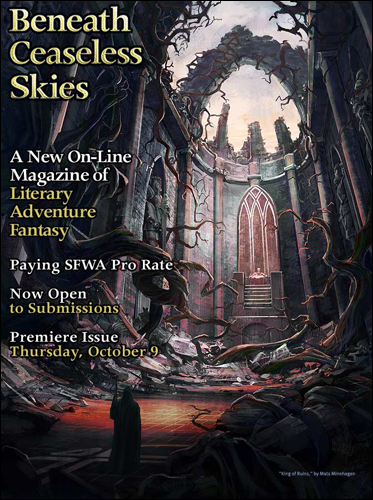
Subterranean Press reports that their Wandering Star-like Limited Edition of this title is about to go out of print. Check out the details of this edition and buy your copy here.
Frankly I’m skeptical of this claim. Wandering Star had enough trouble selling out of their books even when there were no Del Reys competing with them, and even when titles like Bran Mak Morn: The Last King and The Ultimate Triumph were selling much cheaper than $150 the copy, which is what Kull is going for at Subterranean. And once the Del Reys hit the scene, boom — Wandering Star’s sales fell drastically, and they were left with a lot of books they couldn’t unload.
And now here is Subterranean — with a reported print run of 1500 copies, competing against the Del Rey trade paperbacks, and in the middle of a frighteningly shaky economy to boot — on the brink of selling out their run a scant few months after the volume’s debut? Nah, don’t believe it. I suppose they may have successfully foisted them onto various middlemen and independent booksellers, but those guys are going to hold on to the majority of them for a loooong time if past performance is any guide. And if there is any plan in place to return unsold copies they might end up flowing back into Subterranean’s headquarters like a receding tide. I might be wrong, but judging by everything else I’ve seen happen with these high-priced deluxe editions the numbers don’t add up.
As for the initial reviews, the ones that have made their way to me have been mixed. On the positive side, the book’s editor Rusty Burke is quoted on the Subterranean Press website as follows:
Thing’s freakin’ gorgeous. The whole point that Marcelo sold me on when we discussed the REH Library project was that our books would show REH being treated with the kind of respect he deserved, and that the presentation of quality editions would make people think he was indeed a writer who was worthy of respect. I work my tail off on the editorial matters because I want them to be as worthy as the physical presentation. I thank you for continuing the series with the same level of respect.
There’s also a handful of other encomiums on that page. One of my favorite Cimmerian readers, Tim Haberkorn of Colorado, also sends in praise for this volume, telling me via email that it, “matches my Wandering Star editions perfectly.”
But does it? One perilous note can be found here:
Our Director of Production, Yanni Kuznia, is helming our continuation of the Wandering Star Robert E. Howard Limited Editions. Right now, she’s cranium deep in Kull: Exile of Atlantis, proofreading our text against the del Rey version, and also double- and triple-checking the index to make certain everything is aright in that regard as well.
Say what? The exact text that had already been formatted for the Del Rey book wasn’t used? it sounds here as if they are using a separate text and proofing it against the Del Reys. If true, the possibility of typos creeping in looms large.
[UPDATE: After reading the above, Bill Schafer at Subterranean sent along an explanation: “We did indeed receive the del Rey files, but we always proof against a finished copy of the book in case errors have crept into the files we are given, or are introduced when files are converted.” Nice to hear.]
More promising is the revelation on the same page that artist Justin Sweet touched up some of his art within this new volume, and they “played with the contrast” in an attempt to mark an improvement over the reproduction in the Del Reys.
I’ve heard tale from Don Herron, which he himself apparently heard secondhand, of a blistering review of the book appearing on one of the REH Yahoo groups, written by a source I trust implicitly in matters bibliographic: Cimmerian reader Doris Salley. Apparently Doris considers the book an enormous disappointment, criticizing everything from the quality of the slipcase to the paper used to the art layout and binding. Ouch. Doris is exactly the kind of discriminating, hardcore bibliophile that the Wandering Star books were built to appeal to, and if she is that unhappy with Subterranean’s product, it doesn’t bode well for the series.

Looking at the picture posted on their website of the book and slipcase, I can sort of see what she means — it looks at first glance as if the raw materials used for the boards and case don’t hold a candle to the Wandering Star versions Marcelo spent so much money on. People have picked about things like the font size, art, and margins in the WS editions, but the quality of the paper, the workmanship of the slipcases, and the binding and gilded edges have no real peer in modern popular bookmaking as far as I can tell (the sole exception to this sterling record of WS workmanship is the Bran Mak Morn slipcase, which is maddeningly just a bit too tight for the book due to an extra item being added to the Table of Contents at the last minute. But even then, the slipcase is still great, it’s just a bit too tight, especially with a Brodart on the dust jacket).
Me, I’m hoping that Del Rey releases affordable hardcovers of these books to match the one they did for the first Conan volume. That one is perfect for my needs, and if I could get the others in cloth I’d be a happy camper. Unfortunately, it looks as if they decided that sales wouldn’t justify releasing all of these books between boards, and the fallback option of the Science Fiction Book Club hardbacks doesn’t work well either, because those are slightly smaller than the Del Reys and use a much inferior grade of paper.
Next up for Subterranean is The Best of REH Vol. I. The run for that is due to be only half of Kull’s 1500 copies — why the massive reduction, if indeed Kull is selling as briskly as they claim? I suppose Best Ofs might not sell as well as the individual titles as a rule, but you’d think that any 1500 people willing to shell out $150 for a book would plan on getting the entire set. Tim Haberkorn reminds me that it’s Conan III that the Deluxe fans are really waiting for, but the Subterranean site says there is a “rights situation,” adding: “Thus far, the one party that needs to sign off on the third Conan volume has refused to do so, though we thought an understanding had been reached with everyone, and they had been sent a contract promptly.” That was way back in March, and it looks as if they have moved on with the Best Ofs. I feel damn sorry for the guys who bought Conan I and II and have been patiently waiting for III ever since (especially the book’s artist, Greg Manchess, who has yet to see his color plates reproduced as they were intended alongside the text). Stuff happens and all that — with luck it’ll get made eventually, at Subterranean or somewhere else.
















